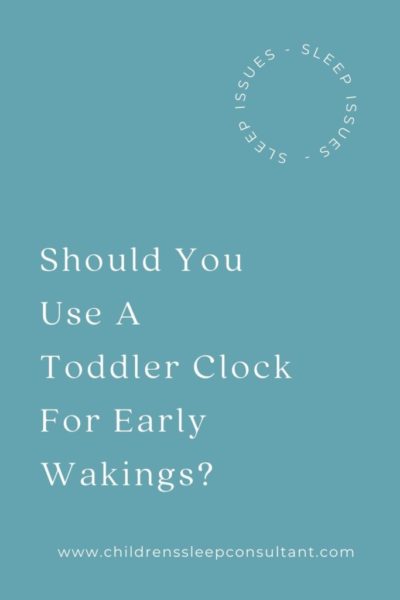Should You Use a Toddler Clock for Early Wakings?
Do you use a toddler clock? How do you find it?
Toddlers can be fickle and headstrong! Early waking is an issue that many families report to me, so I thought we’d take a look at toddler sleep clocks.
Should you use them for early wakings, or are there better methods?

Parents are in charge of toddler clocks, so they set the time that their child should wake for the day, and this is often indicated by a sunshine or a yellow glow on the clock to indicate it’s now daytime. Toddlers are taught that when the clock indicates nighttime, they should be sleeping or resting- but if the light is yellow, it’s ok to get up.
Do toddler clocks work?
There are mixed results with toddler clocks. Some simply do not yet understand the concept. Others can manipulate the timings (how they learn this, I do not know!), and others just prefer to ignore them altogether!
As with anything, it depends on your child.
If you think you’d like to try a toddler clock, it might be worth bearing these tips in mind:
- Let your toddler be involved as much as possible. It’s a really great idea to promote the toddler clock as a grown-up accessory and to encourage your child to be as hands-on as possible. So let your toddler help to choose the clock and set it up.
- Explain what you’re doing and why, and allow your child to feel in control. Talk about appropriate times to get up, and what your child can do if they wake before the agreed time. Spend a few days chatting it all through and answering questions before you set it up.
- Set yourself up for success by initially setting the clock to the time your child currently wakes. They can then see how the clock works.
- Congratulate your child for using the clock, and make sure you use lots of positive reinforcements every evening and morning. If your child doesn’t quite get it at first, stay positive and eventually, it should click.
- Stay consistent. Use the clock every night and every morning and make it part of your child’s routine.
- As they become more comfortable using the clock, you can slowly make the time later and later; just 5 or 10 minutes should do it every 4 or 5 days.





